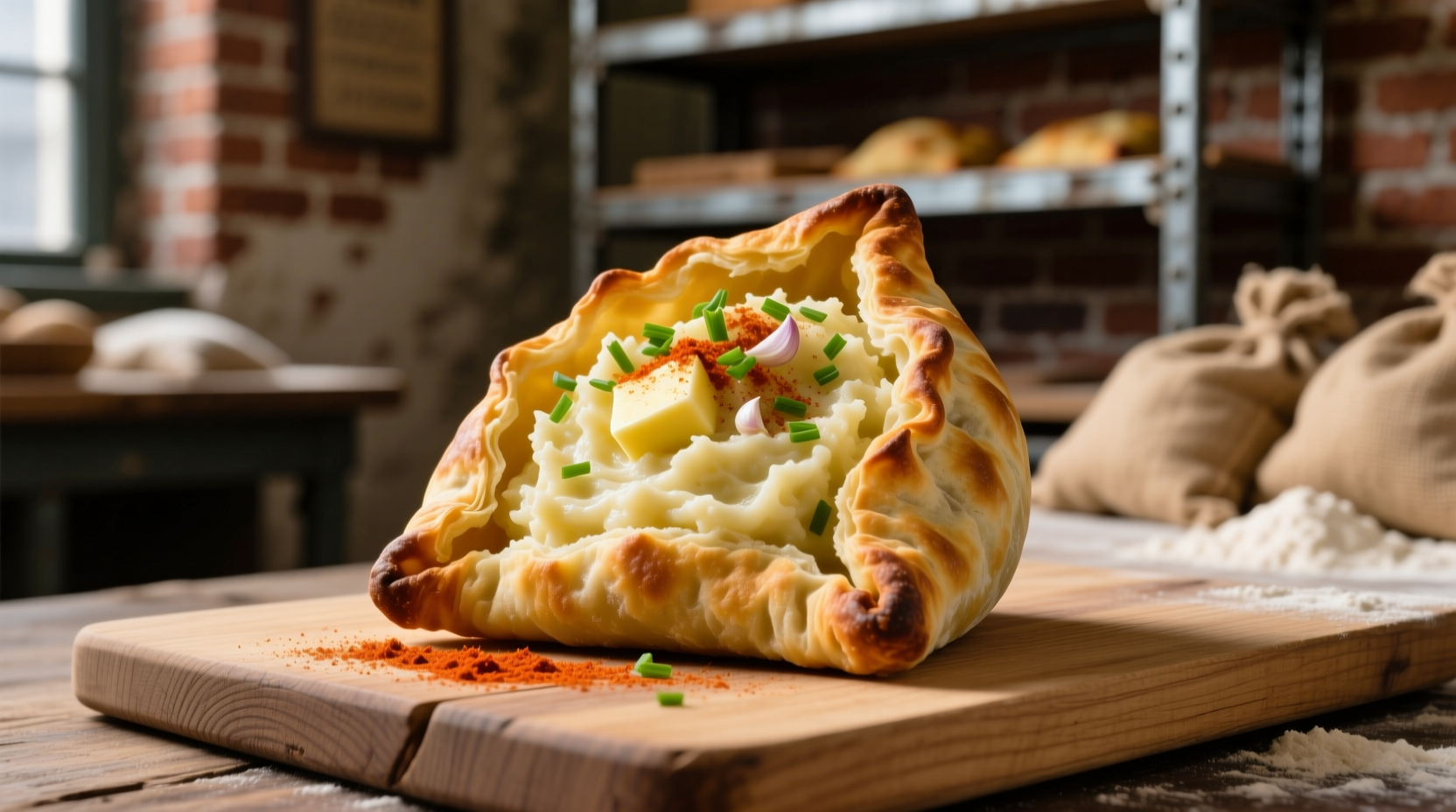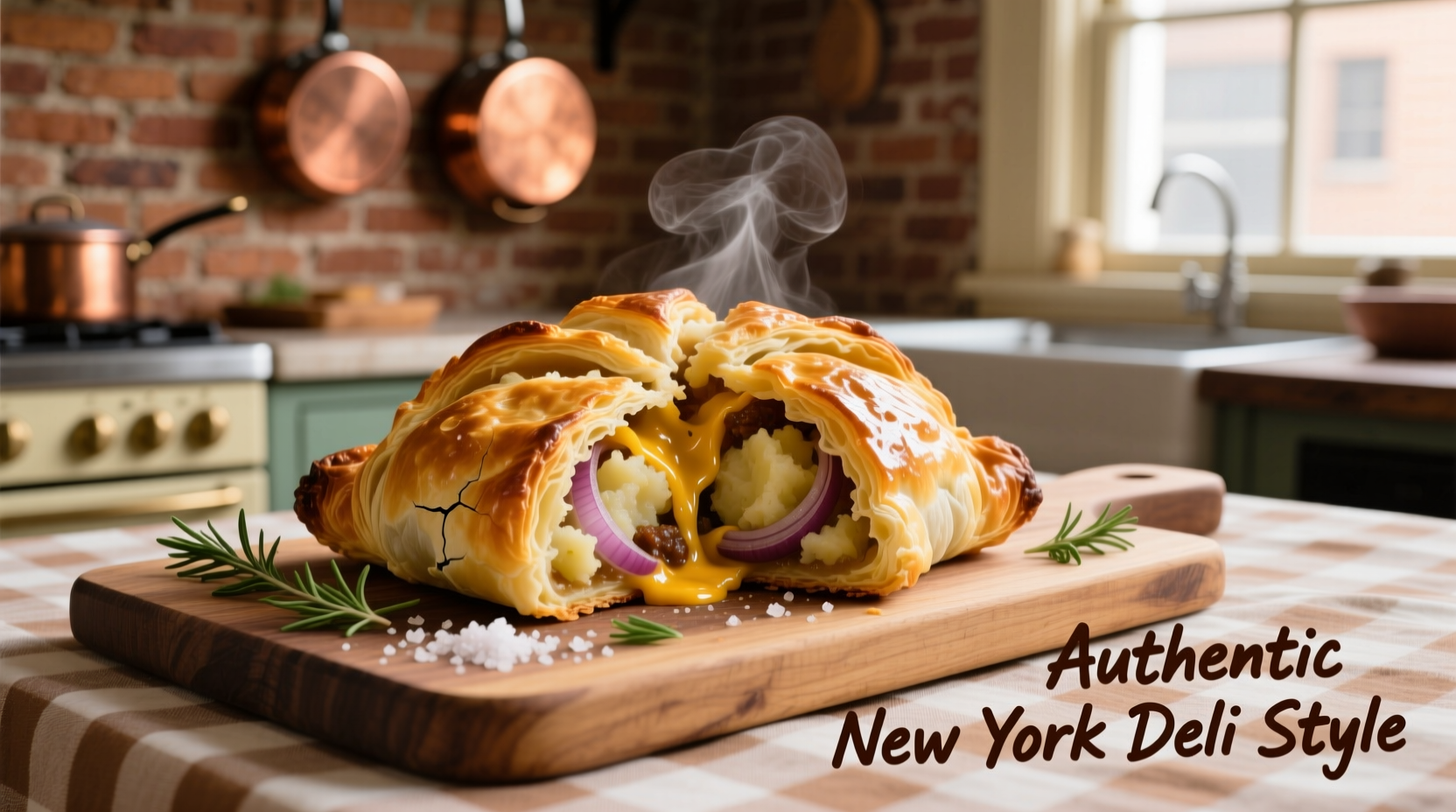Potato knish is a traditional Eastern European Jewish pastry consisting of a savory filling—typically mashed potatoes, onions, and schmaltz—encased in a flaky dough shell, then baked or fried. Originating in 19th-century Ukraine, it remains a beloved comfort food in Jewish communities worldwide.
What Makes Potato Knish a Culinary Treasure Worth Knowing
Imagine biting into a warm, golden pastry that transports you to the bustling streets of pre-war Eastern Europe. That's the magic of potato knish—a humble yet deeply satisfying handheld meal that has nourished Jewish communities for generations. Whether you're exploring your heritage, expanding your culinary horizons, or simply craving authentic comfort food, understanding potato knish connects you to a rich cultural legacy that continues to thrive today.
Defining the Classic Potato Knish
At its essence, a traditional potato knish features:
- Dough: A simple flour-based shell, sometimes enriched with schmaltz (rendered chicken fat) for extra flavor
- Filling: Creamy mashed potatoes blended with caramelized onions and seasonings
- Shape: Typically square or rectangular, though round variations exist
- Cooking method: Baked until golden or deep-fried for extra crispness
Unlike pierogi or empanadas, knishes feature a thinner dough-to-filling ratio with the pastry serving primarily as a vessel for the savory interior. The best potato knishes achieve perfect harmony between the flaky exterior and creamy, well-seasoned potato center.

From Eastern European Streets to Global Comfort Food: A Historical Timeline
Understanding potato knish requires appreciating its remarkable journey through time:
| Time Period | Development | Cultural Significance |
|---|---|---|
| Late 1800s | Emergence in Ukrainian and Polish shtetls (Jewish villages) | Affordable, portable meal for working-class families |
| Early 1900s | Spread to American cities via Jewish immigrants | Became street food staple in New York's Lower East Side |
| 1920s-1940s | Knish bakeries proliferate across urban America | Sold by "knish ladies" pushing carts through neighborhoods |
| Post-WWII | Decline as Jewish communities assimilated | Survived primarily in specialty bakeries and family kitchens |
| 21st Century | Resurgence as artisanal food trend | Featured in food festivals and modernized by contemporary chefs |
According to research from the YIVO Institute for Jewish Research, the knish's endurance stems from its practicality—requiring only basic pantry ingredients while providing substantial nutrition. During difficult economic periods, the potato knish became symbolic of Jewish resourcefulness and culinary adaptation.
Traditional Preparation Methods You Should Know
While recipes vary by family and region, authentic potato knish preparation follows these essential principles:
Dough Techniques
The ideal knish dough balances pliability with structural integrity. Traditional bakers use:
- Cold water and minimal fat for a sturdy yet tender shell
- Rolling to precise 1/8-inch thickness to prevent dough dominance
- Egg wash for that signature golden-brown finish
Filling Essentials
The potato mixture makes or breaks a knish. Key elements include:
- Russet potatoes for optimal starch content and creaminess
- Slow-cooked onions for deep, sweet flavor (never raw)
- Schmaltz instead of butter for authentic Ashkenazi flavor
- Minimal seasoning—salt, pepper, and sometimes a pinch of paprika
Modern variations sometimes incorporate cheese, kasha (buckwheat), or even sweet potato, but purists maintain that true potato knish contains only the classic potato-onion combination.
Why Potato Knish Matters in Jewish Cultural Heritage
Beyond its deliciousness, the potato knish represents something profound in Jewish culinary tradition. As documented by the National Museum of American Jewish History, knishes served as:
- Economic sustenance: An affordable meal during periods of poverty and displacement
- Cultural connector: A food that maintained identity across generations and geography
- Community builder: Street vendors created social hubs where neighbors gathered
- Survival food: Provided nutrition during difficult historical periods
The knish's simplicity reflects Jewish culinary philosophy—transforming humble ingredients into nourishing, meaningful food through technique and tradition. In many families, the recipe represents an unbroken chain connecting contemporary eaters with ancestors who relied on this comforting meal.
Finding Authentic Potato Knish Today
While mass-produced versions exist, seeking authentic potato knish requires knowing where to look:
What to Look For
- Texture: Crisp exterior with creamy, homogenous potato interior
- Flavor balance: Potato-forward with subtle onion sweetness
- Construction: No leakage or separation between dough and filling
- Temperature: Served warm, never cold or reheated multiple times
Where Authentic Knishes Thrive
According to the Jewish Food Society's 2023 survey of traditional Jewish bakeries, authentic potato knishes remain most accessible in:
- Specialty Jewish bakeries in major urban centers
- Food festivals celebrating Ashkenazi culinary heritage
- Family-run establishments operated by first or second-generation immigrants
- Cooking classes focused on preserving traditional techniques
When evaluating quality, remember that the best potato knishes prioritize ingredient integrity over novelty. While creative variations have their place, the traditional potato-onion version remains the cultural touchstone worth experiencing first.
Frequently Asked Questions About Potato Knish
What's the difference between a knish and a pierogi?
Knishes feature a thinner dough shell with a higher filling-to-dough ratio than pierogi. While both contain potato fillings, knishes typically use a simple potato-onion mixture without cheese, and are shaped as squares or rectangles rather than half-moons.
Are potato knishes always vegetarian?
Traditional Ashkenazi potato knishes use schmaltz (rendered chicken fat) in both dough and filling, making them non-vegetarian. Modern variations sometimes substitute oil or butter, but authentic versions contain animal products.
How should I properly reheat a potato knish?
For best results, reheat in a 350°F oven for 10-15 minutes until the exterior regains crispness. Avoid microwaving, which makes the dough soggy. If frozen, thaw completely before reheating to ensure even warming of the dense potato filling.
Why are potato knishes associated with Jewish culture?
Potato knishes originated in 19th-century Eastern European Jewish communities as an affordable, portable meal made from readily available ingredients. Jewish immigrants brought the tradition to America, where knish vendors became cultural fixtures in neighborhoods like New York's Lower East Side, cementing its place in Ashkenazi culinary heritage.
Can potato knishes be frozen for later consumption?
Yes, fully baked potato knishes freeze exceptionally well for up to three months. Wrap individually in parchment paper, then place in airtight containers. Thaw in the refrigerator before reheating in an oven to maintain texture. Unbaked knishes can also be frozen and baked directly from frozen with adjusted cooking time.











 浙公网安备
33010002000092号
浙公网安备
33010002000092号 浙B2-20120091-4
浙B2-20120091-4